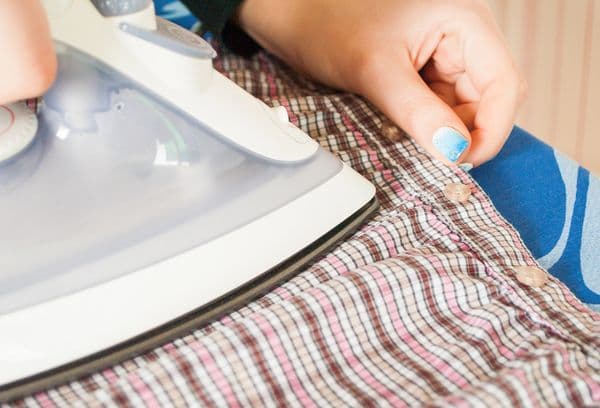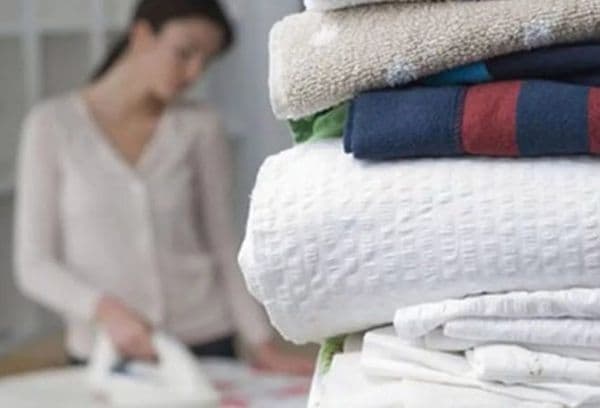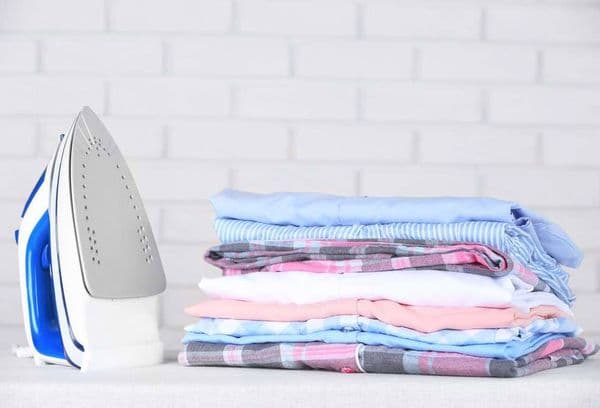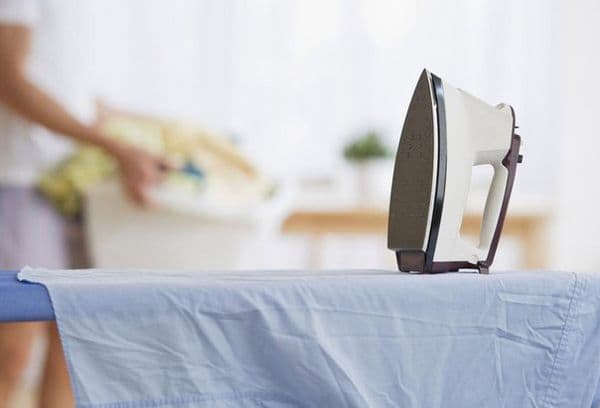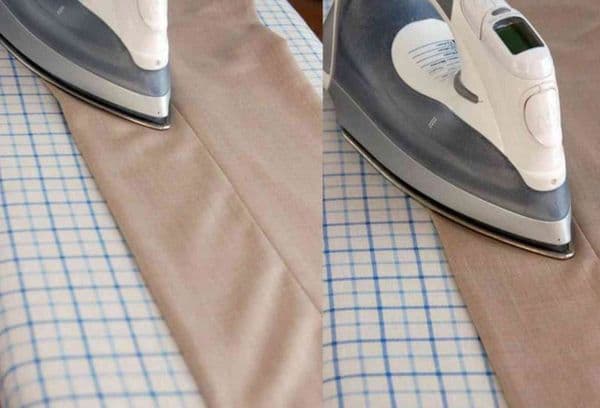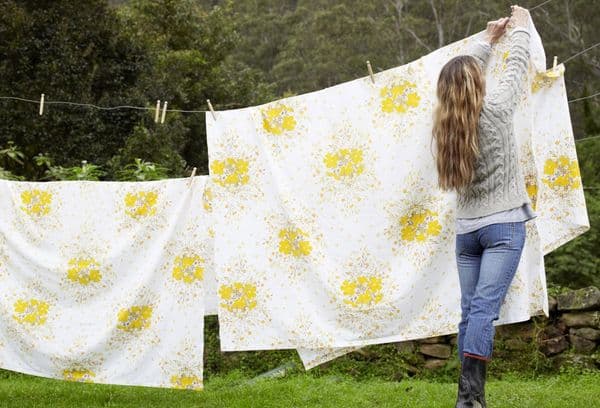How to properly iron clothes and bed linen: making the process easier
What housewife doesn’t dream of quickly ironing all her clothes and linen, especially when she has to do it daily and in large quantities? These tips may seem obvious to some, but will surprise others. In any case, even simple rules for working with an iron and various fabrics should be refreshed.
Iron mode and fabric features
In order not to damage the product with the iron, carefully study its label. As a rule, all the necessary information is presented on it in the form of symbols.
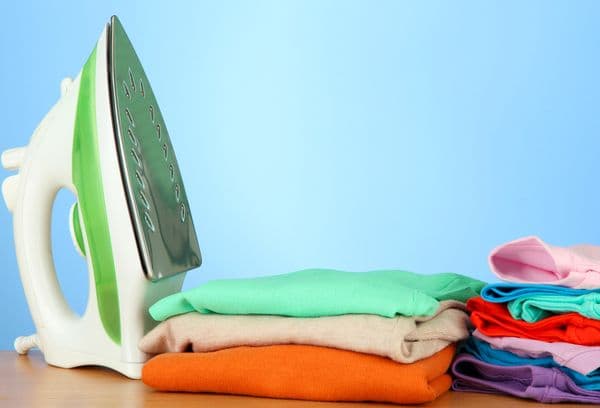
General rules for different types of fabric:
- Ironing cotton is quite easy; it can be ironed either dry or steamed.
- For viscose - only dry ironing at moderate temperatures.
- Linen wrinkles easily, so the smoothness of the material is achieved only with steaming and at high power.
- It is better to iron synthetic fabric through gauze at a moderate temperature; there is a risk of burning the product with a hot iron.
- Wool shrinks from high temperatures and becomes unsightly shiny, so it is ironed through a layer of damp cloth.
- Silk products are quite delicate, they are better ironed when wet, but you need to use steaming or a spray bottle with caution - streaks may remain. It is better to wrap the fabric in a damp towel and leave it for half an hour.
- Some materials stretch and warp easily, such as jersey and knitwear. When ironing such items, you should not press the iron too hard or make sudden movements.After the procedure, it is not recommended to immediately hang or put on the item; let it cool down.
- It is better not to iron terry items of linen and wardrobe at all, otherwise they will quickly lose their softness and hygroscopicity.
- Fleecy fabrics are ironed strictly from the inside out: plush, velvet, velor, and types of drape can become “pressed down” and less beautiful.
- You shouldn't experiment with nylon either. It is enough to wet such a thing and let it dry in a straightened state.
You also need to consider the presence of decor on the product. Embroidery, sequins and other trims are a sure sign that the item has been ironed from the inside out.
Advice
Why are fabrics ironed predominantly from the inside out? The reason for this is the shiny mark from the iron. This technique can be used on chintz when shine is the main characteristic of the fabric.
As practice shows, following the instructions solves many problems. Things quickly become unusable or fade if you use high temperatures, press, or get too wet. Even ironing according to the rules will eventually damage the product, so try to avoid ironing whenever possible. But you still shouldn’t abandon the device: it allows you to destroy germs if the product has been washed in cold water.
Bed sheets
Working with bulky items requires a wide, long and stable ironing board. Buy such a device and save a lot of time and nerves. Modern boards also come with a basket for folding laundry, which is also very convenient.
How to iron bed linen quickly and with pleasure:
- Turn on pleasant music (this really helps many), a new or favorite movie.
- First, heat the soleplate of the iron, and then start ironing.
- Fold voluminous products 4 times and walk along each side.
- If desired, unfold the laundry and smooth out any wrinkles.
Some fabrics iron much better with the steam function. It is better not to dry cotton sheets and pillowcases at all, but to iron them slightly damp.
Tip from purity-en.htgetrid.com: Place your ironing board near a window. Daylight will allow you to see all the wrinkles and get rid of them faster. For right-handers: the light comes from the left side, the socket and iron are on the right. For left-handed people the opposite is true.
Ironing clothes: small and big secrets
One of the most iron-resistant wardrobe items is a shirt. Particularly difficult are the sleeves and cuffs. It is better to stock up on an armrest - a special stand for ironing small parts without creases. If there is no device, then it can be easily replaced with a towel folded into a roll. The cuffs are ironed unbuttoned, the collar is ironed on both sides through damp gauze. Lastly, we work on the back.
How to properly work with edges and pockets on clothes:
- Align the parts in the usual way.
- We put damp gauze on top, folded in several layers.
- Place an iron on it and press for a couple of seconds.
Another interesting tip: first run the iron across the material, and then along it. It is easier to start ironing skirts and dresses from the waist, moving to the bottom of the hem. Feel free to use the narrow end of the board: put the hem on it so as not to iron out the longitudinal folds.
Features of ironing trousers:
- We work with each pant leg separately. To make the arrows match, you need to fold the trousers and mark their location.
- First, iron the seams and pocket area, as well as the lining.
- Move the iron from bottom to top.
- The arrows will last longer if you go over the fabric with dry soap from the inside, and from the front - with an iron through a damp cloth soaked in a vinegar solution.
Line up the order of ironing items made from different fabrics. Start with the delicate ones that require low temperatures. These are lace, silk products, wool. Gradually move on to durable materials, changing the mode. Since modern irons heat up faster than they cool down, the accuracy of the mode will be higher.
How to dry things properly
The way the item is dried can greatly simplify the process of ironing it. Do not hang items like an accordion; avoid throwing them over a clothesline. First shake the washed clothes and linen, straighten out the folds, then secure them on a rope with clothespins or hang them on hangers, or better yet, lay them out on a horizontal surface. To help heavy fabrics dry faster, place a terry towel underneath them.
Things need to be taken out of the basin or drum immediately after washing. The longer they lie, the higher the likelihood of creases.
The choice of technology also plays an important role. Modern machines are equipped with anti-crease and anti-smoothing functions. It is unlikely that you will be able to achieve an ideal result with a Soviet-era iron. The more functions the device has, the easier and faster the ironing process will be. With cool technology, the desire to do housework will arise on its own.
